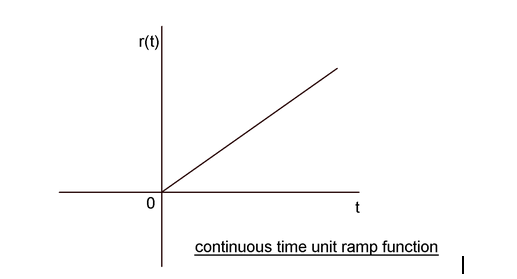1) The Hilbert transform of the signal sinω1t + sinω2t is
a. sinω 1t + sinω 2t
b. cosω 1t + cosω 2t
c. sinω 2t + cosω 2t
d. sinω 1t + sinω 1t
|
Answer
Explanation
|
ANSWER: cosω1t + cosω2t
Explanation:
In Hilbert transform, the signal gets shifted by 900.
So the signal sinω1t+ sinω2t gets shifted by 900
sinω1(t+900)+ sinω2(t+900)
= cosω1t+ cosω2t
|
|
2) The rms value of thermal noise voltage is related to Boltzmann's constant k as
a. V n is Directly proportional to k 2
b. V n is Directly proportional to k
c. V n is Directly proportional to √k
d. V n is Directly proportional to k 3
|
Answer
Explanation
|
ANSWER: Vn is Directly proportional to √k
Explanation:
Noise voltage Vn is given by
√(4R KTB)
Where, K = 1.381 × 10-23 J/K, joules per Kelvin, the Boltzmann constant
B is the bandwidth at which the power Pn is delivered.
T noise temperature
R is the resistance
If K is the Boltzmann's constant, the rms value of thermal noise voltage is proportional to √k.
|
|
3) Threshold effect is:
a. Reduction in output signal to noise ratio
b. Large noise as compared to input signal to envelope detector
c. Detection of message signal is difficult
d. All of the above
|
Answer
Explanation
|
ANSWER: All of the above
Explanation:
It is defined as the value of input signal to noise ratio below which the output signal to noise ratio decreases much rapidly than the input signal to noise ratio. It is the property of envelope detectors used for the demodulation of modulated signals. It occurs due to presence of large noise and therefore causes loss in the message signal. When the noise is very large as compared to the input at envelope detector, the message signal at the output is mixed with noise.
|
|
4) Thermal noise is also known as
a. Johnson noise
b. Partition noise
c. Flicker noise
d. Solar noise
|
Answer
Explanation
|
ANSWER: Johnson noise
Explanation:
Thermal noise is also known as Johnson noise or White noise. It is the random noise generated in resistive components due to rapid and random motion of atoms or electrons. Johnson noise is named after the scientist J.B. Johnson. Thermal noise contains all frequency components in equal amount. The white noise has infinite average power and is not physically attainable but it has suitable mathematical properties so it is used for system analysis in most of the systems.
|
|
5) For a Unit ramp function area of pulse curve is unity
a. Discontinuous at time t=0
b. Starts at time t=0 and linearly increases with t
c. Both a and b
d. None of the above
|
Answer
Explanation
|
ANSWER: Starts at time t=0 and linearly increases with t
Explanation:

A Unit ramp function is a continuous time function that starts at time t=0 and linearly increases with t. Denoted by r (t), the unit ramp function is represented by
r(t) = 0 for t<0
= t for t>0
|
|
6) In Unit impulse function
a. Pulse width is zero
b. Area of pulse curve is unity
c. Height of pulse goes to infinity
d. All of the above
|
Answer
Explanation
|
ANSWER: All of the above
Explanation:
In Unit impulse function
1. The width of the pulse is zero.
2. Area of pulse curve is always unity.
3. Height of pulse goes to infinity.
4. The height of the impulse is same as the area of the impulse.
|
|
7) Unit step function is
a. Exists only for positive side
b. Is zero for negative side
c. Discontinuous at time t=0
d. All of the above
|
Answer
Explanation
|
ANSWER: All of the above
Explanation:
Unit step function is a type of function that exists only for positive side and is zero for negative side. The unit step function is discontinuous at time t=0.
The unit step function u(t) is defined as
u(t) = 0 for t<0
= 1 for t>0
|
|
8) Random signals is
a. May be specified in time
b. Occurrence is random
c. Repeat over a period
d. None of the above
|
Answer
Explanation
|
ANSWER: Occurrence is random
Explanation:
Random signals have their occurrence random in nature. These signals cannot be specified in time. The signals are irregular in nature, that is, they do not repeat with time. Thermal noise is a type of random signal.
|
|
9) An even function f(x) for all values of x and x holds
a. f(x) = f(-x)
b. f(x) = -f(x)
c. f(x) = f(x)f(-x)
d. None of the above
|
Answer
Explanation
|
ANSWER: f(x) = f(-x)
Explanation:
If f(x) is a real-valued function of a real variable then f is even if the following equation holds for all the values of x and x.
f(x) = f(-x)
Or
f(x) - f(-x) = 0
|
|
10) Properties of Hilbert transform are:
a. The signal and its Hilbert transform have same energy density spectrum
b. The signal and its Hilbert transform are mutually diagonal
c. Both a and b are correct
d. None of the above
|
Answer
Explanation
|
ANSWER: Both a and b are correct
Explanation:
Properties of Hilbert transform are:
1. The signal and its Hilbert transform have same energy density spectrum
2. The signal and its Hilbert transform are mutually diagonal
3. The signal and its Hilbert transform have same auto correlation function.
|
|